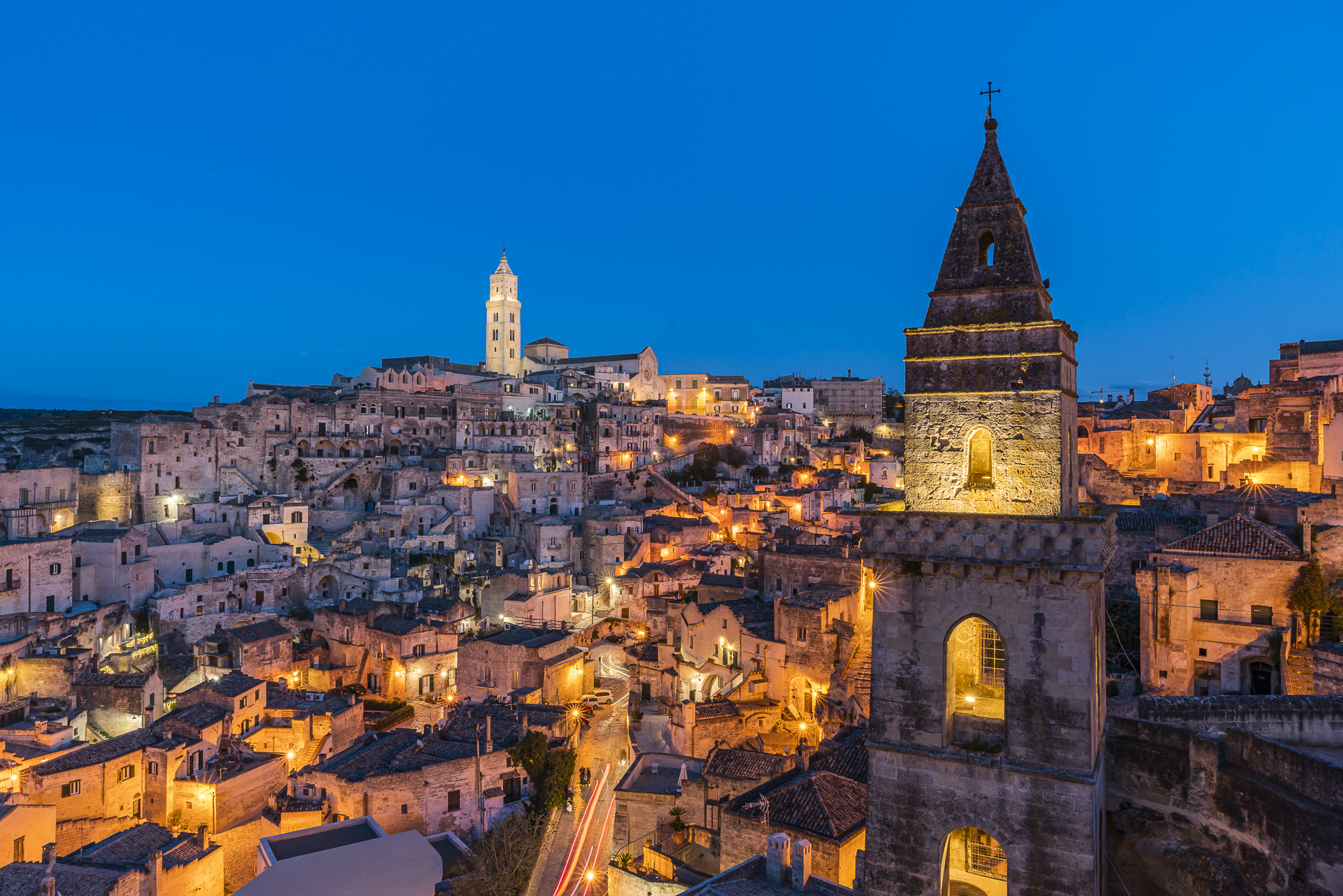
Matera – 9 tips and sights in perhaps the most fascinating city in Italy
Like a phoenix rising from the ashes, Matera has blossomed over the past 50 years from an “eyesore” of Italy to a magnet for the southern Italian region of Basilicata. Since 1993, the Sassi of Matera have been a UNESCO World Heritage Site. In this way, both the protection of the historical structures and the development of tourism were promoted. At the latest since its nomination as European Capital of Culture 2019 and the prominent appearance in the latest James Bond film, the fascinating rock city has moved onto the travel radar of many Italy fans.
I, too, had had my eye on Matera for a long time. Especially since a visit to the Sassi of Matera can be easily combined with other southern Italian destinations. After our road trip through Puglia, we spent two days in Matera and meticulously explored the maze of alleys. As the essence of this, I have brought a handful of tips for all those who are also flirting with a trip to the Felsentadt.
The highlights and sights of the city of Sassi
The main attraction of Matera are the so-called Sassi di Matera. “Sassi” translates to “stones” in German. The name refers to the two oldest districts of the city, “Sasso Barisano” and “Sasso Caveoso“, which rise high above the imposing gorge of the Gravina di Matera. Here, on the steep slopes of the karst plateau of the “Murgia”, traces of settlement have been traced back to the Neolithic Age. This makes Matera one of the oldest cities in the world and also looks back on an eventful past, which was marked by many highs and lows. But it’s not just Matera’s story that fascinates. The city captivates you at every turn with its many vantage points over the sand-colored, intricate city backdrop.
Matera Tip No. 1: stay in a cave dwelling
Until the 1950s, people lived in the labyrinth of caves of the Sassi, until the poor hygienic conditions led to resettlements ordered by the authorities. As a result, the two historic districts slowly fell apart. The turnaround came in the course of the designation as a UNESCO World Heritage Site. The comprehensive renovation programme also included the hotel project “Albergo Diffuso – Sextantio Le Grotte della Civita“. The hotel, which currently has 18 rooms and suites, is located in the middle of the Sassi di Matera and uses the existing basic structures of the stone caves without any new buildings. It has been extensively renovated and restored to its original state while retaining the original shapes and materials. If you want to spend the night in Matera in a prime location in an ambience that matches the scenery, you will definitely not be disappointed here.
It is also convenient that the Sextantio Le Grotte della Civita (partner link) offers guaranteed parking spaces including a shuttle service to the hotel for guests arriving by car in a multi-storey car park on the edge of the old town. Access to the two historic districts is severely restricted for private cars or is not permitted without a corresponding access permit.
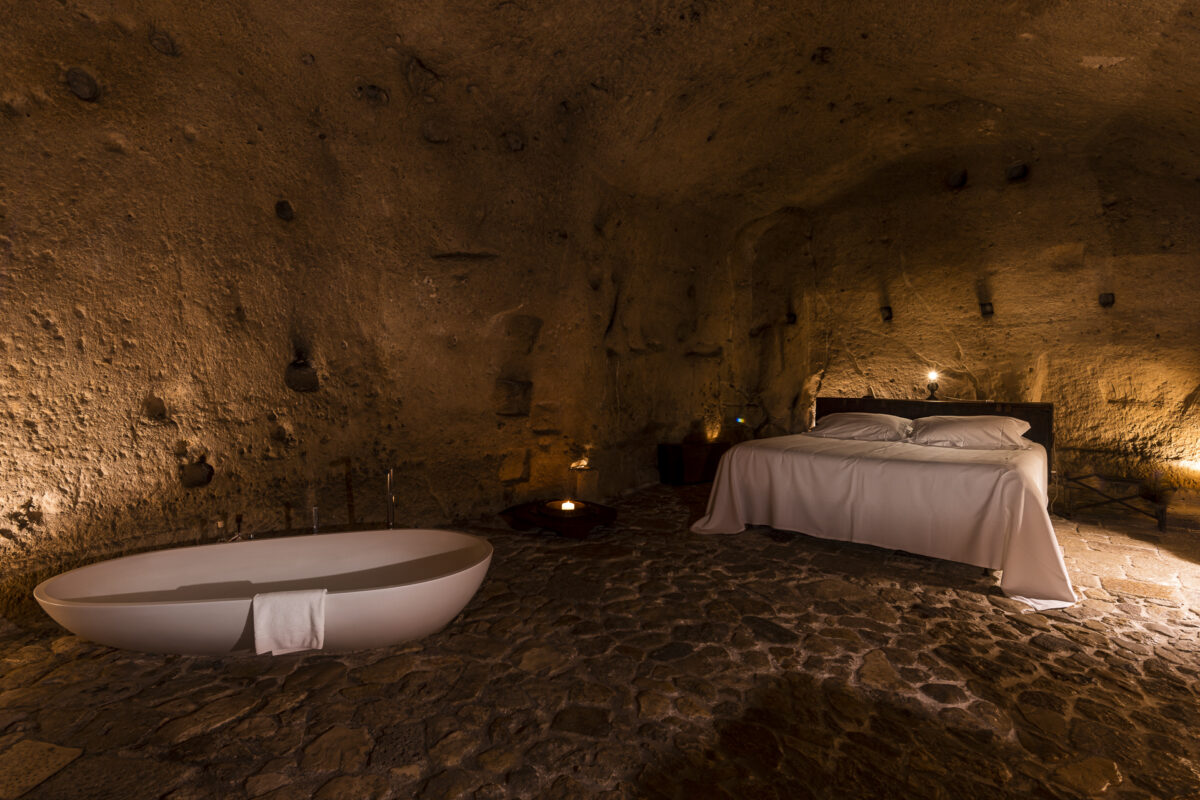
Matera Tip No. 2: explore the viewpoints of the Sassi
As written in the introduction, there is definitely no shortage of impressive viewpoints in Matera. The best thing to do is to just let yourself drift through the maze of alleys of the Sassi. If you have a bit of trouble finding your way around at the beginning (which is admittedly not easy), it is best to remember the following two fixed points: The gorge of the Gravina as the deepest and the striking, white spire of the cathedral of Matera as the highest point of the Sassi. And yes: in between, countless steps are waiting to be overcome.
A special vantage point is located behind the rock church of Santa Maria de Idris. But also from the Piazza Duomo or from the Belvedere Luigi Guerricchio detto dei “Tre Archi”, which is located right next to the tourist office on the edge of Piazza Vittorio Veneto, there are great panoramic views over the rock city.
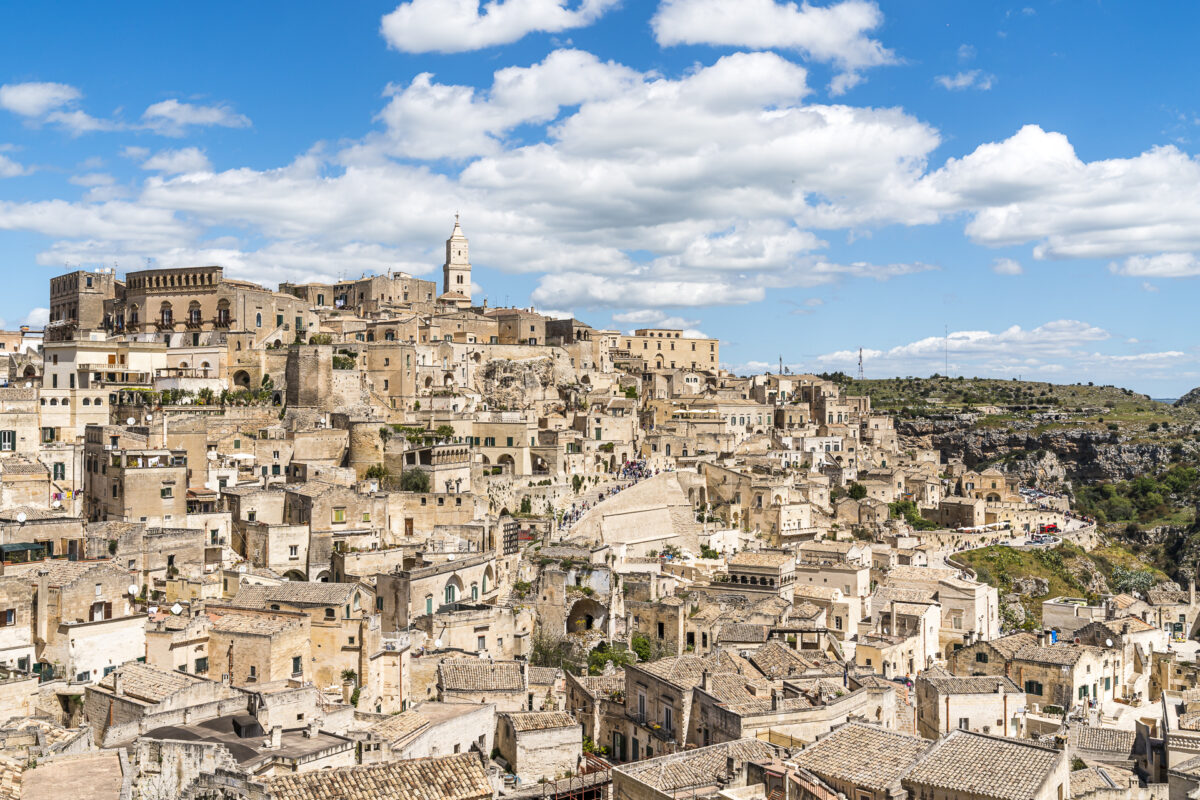
Matera Tip No. 3: enjoy a dinner at Vitantonio Lombardo’s
In Matera you will find the entire range of tourist restaurants with a rather dubious quality, down-to-earth osterias and higher-priced fine dining places. For all those with a penchant for Michelin-starred cuisine, I would like to share the following tip: a dinner at the Ristorante Vitantonio Lombardo. The Michelin-starred restaurant is conveniently located right next to the Sextantio and is also integrated into the basic structure of the ancient karst stone caves. There are three tasting menus to choose from, starting at a price of 130 euros (wine pairings from 60 euros). In terms of price/performance as well as experience factor, definitely worth a stopover.
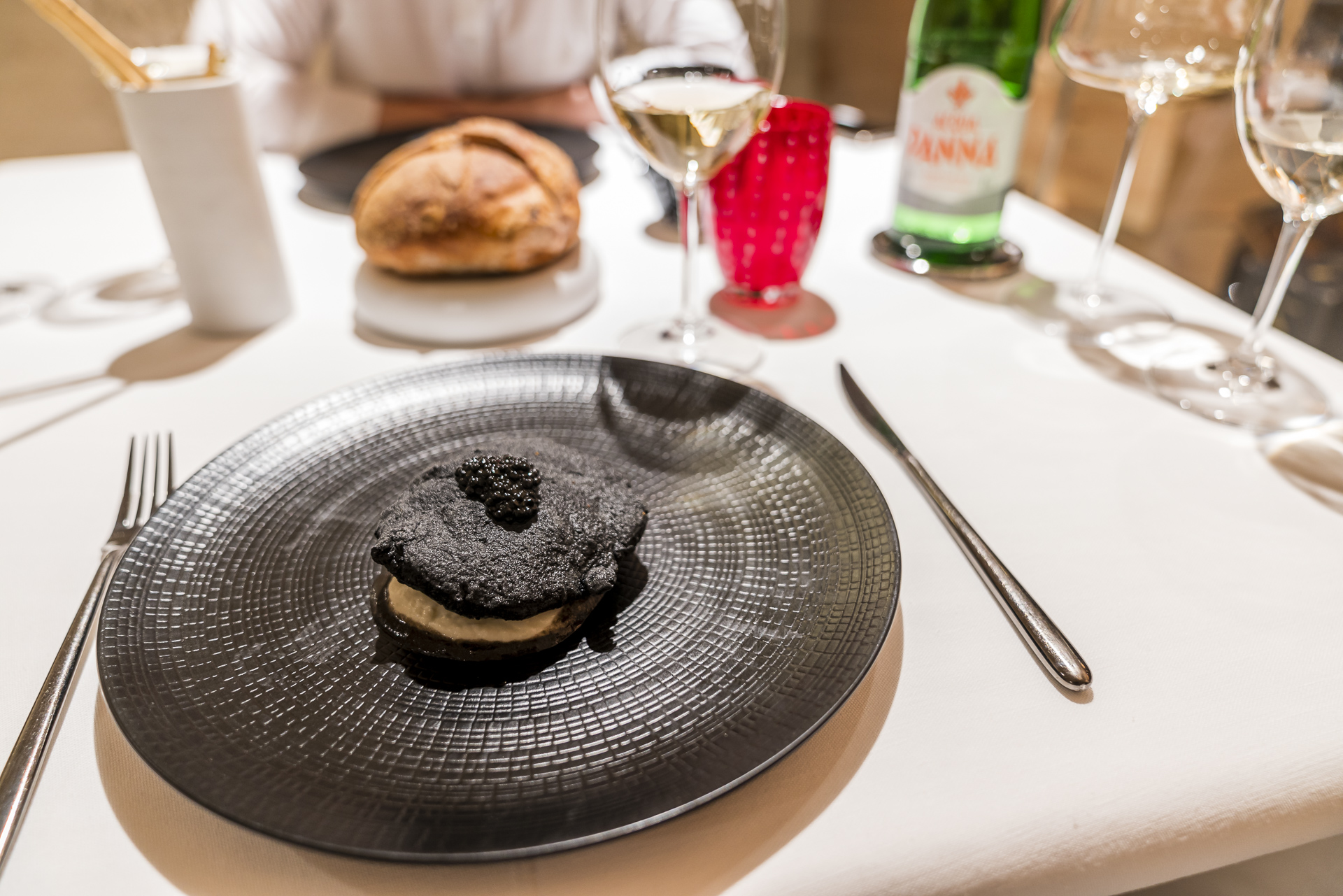
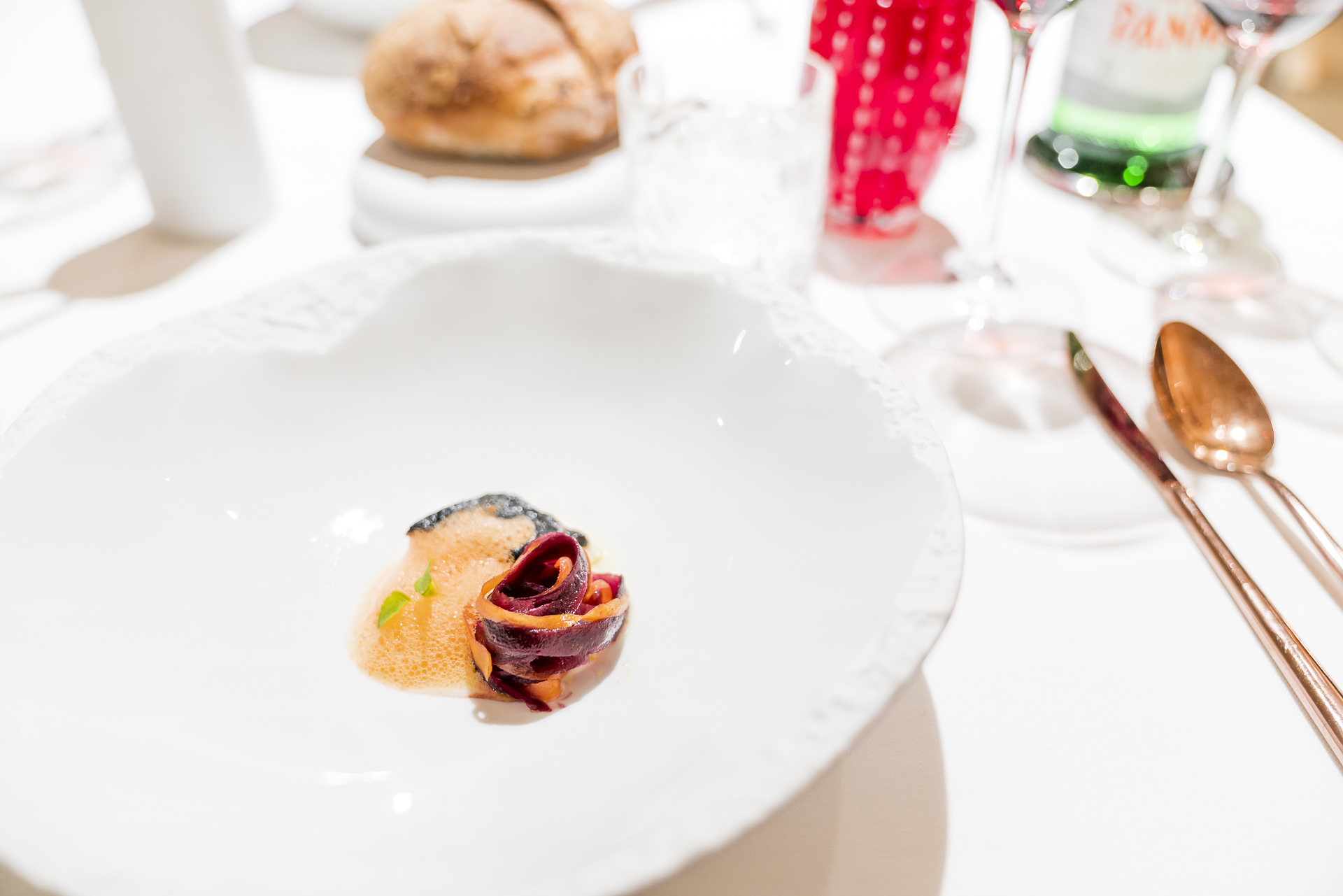
During my research, I also marked the Dimora Ulmo Ristorante and La Nicchia nel Sasso Osteria Contemporanea as potentially exciting restaurants. In the end, we ended up in the Quarry Lounge spontaneously and not so much because of the good food, but rather because of the view (see tip 7).
Matera Tip No. 4: wander through the rock city in the early morning
We visited Matera in April on a bank holiday weekend. Accordingly, there was quite a lot going on – but not as much as I had secretly feared. Nevertheless, it is worth taking a stroll through the rock city in the morning hours. Not only because there are hardly any tourists (and especially no groups) on the road at this time, but also because the city heats up very quickly due to the heat-storing stones and the temperatures in the morning make you sweat less when climbing stairs. We walked past the cathedral shortly after 9:00 a.m. and spontaneously – because no one was queuing – took a look inside. You have to pay one euro for this.
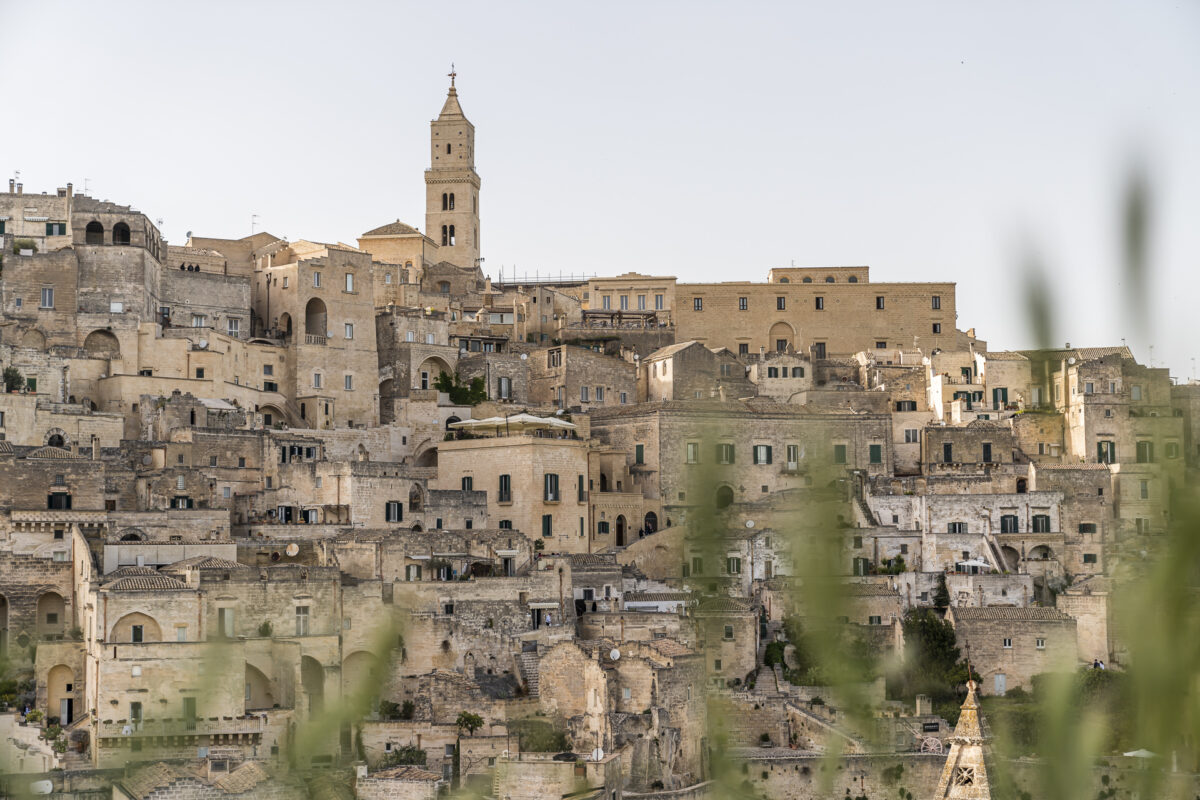
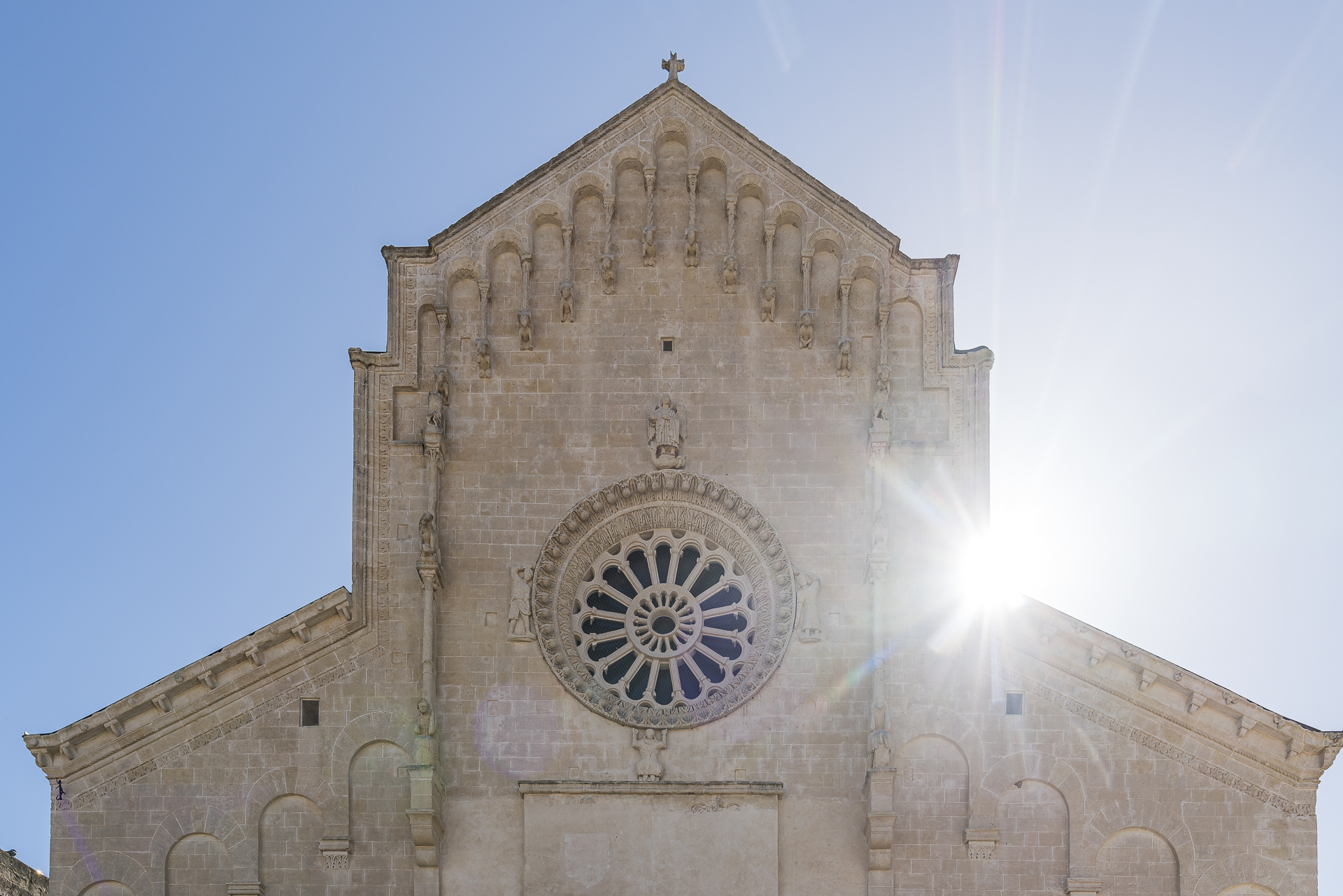
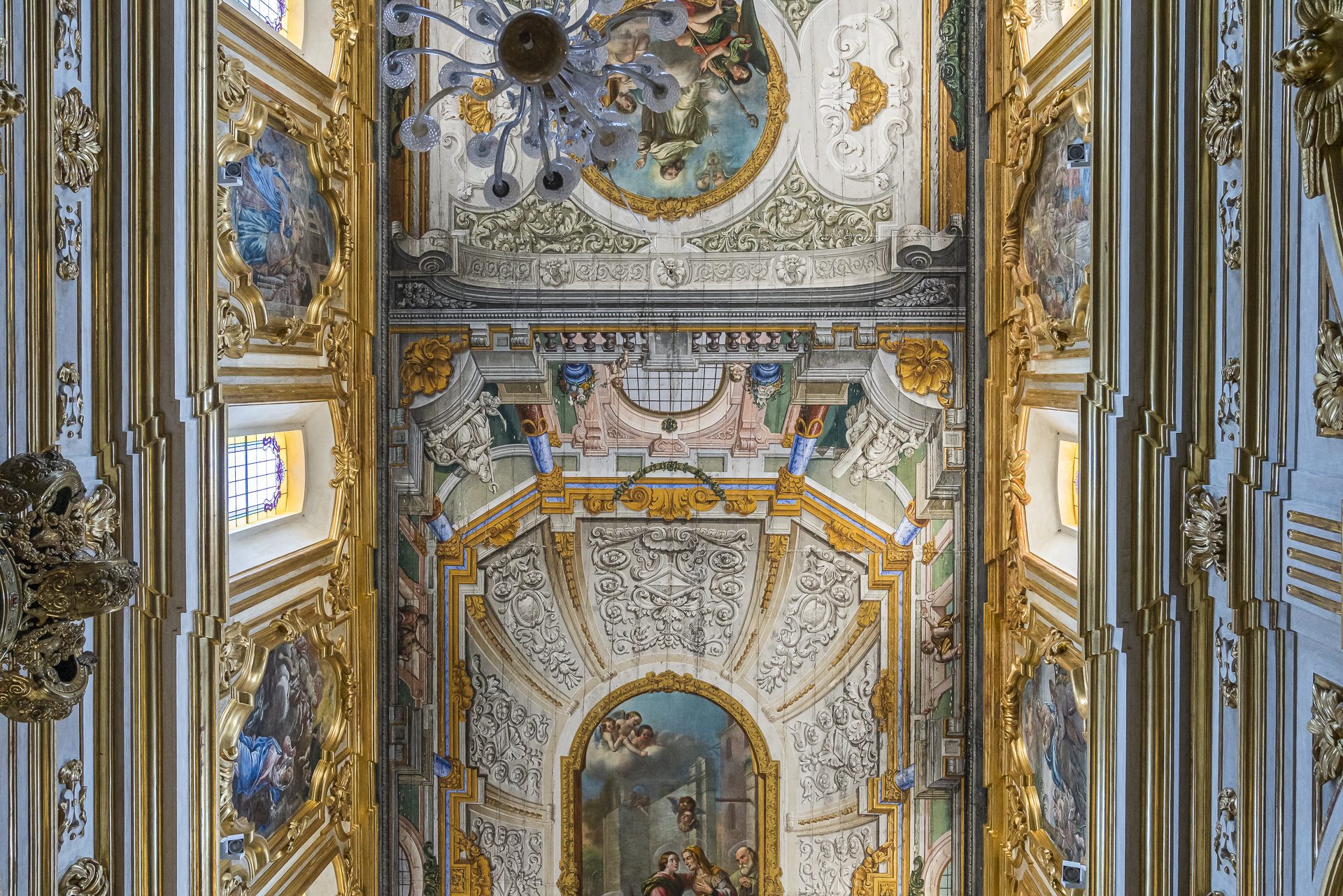
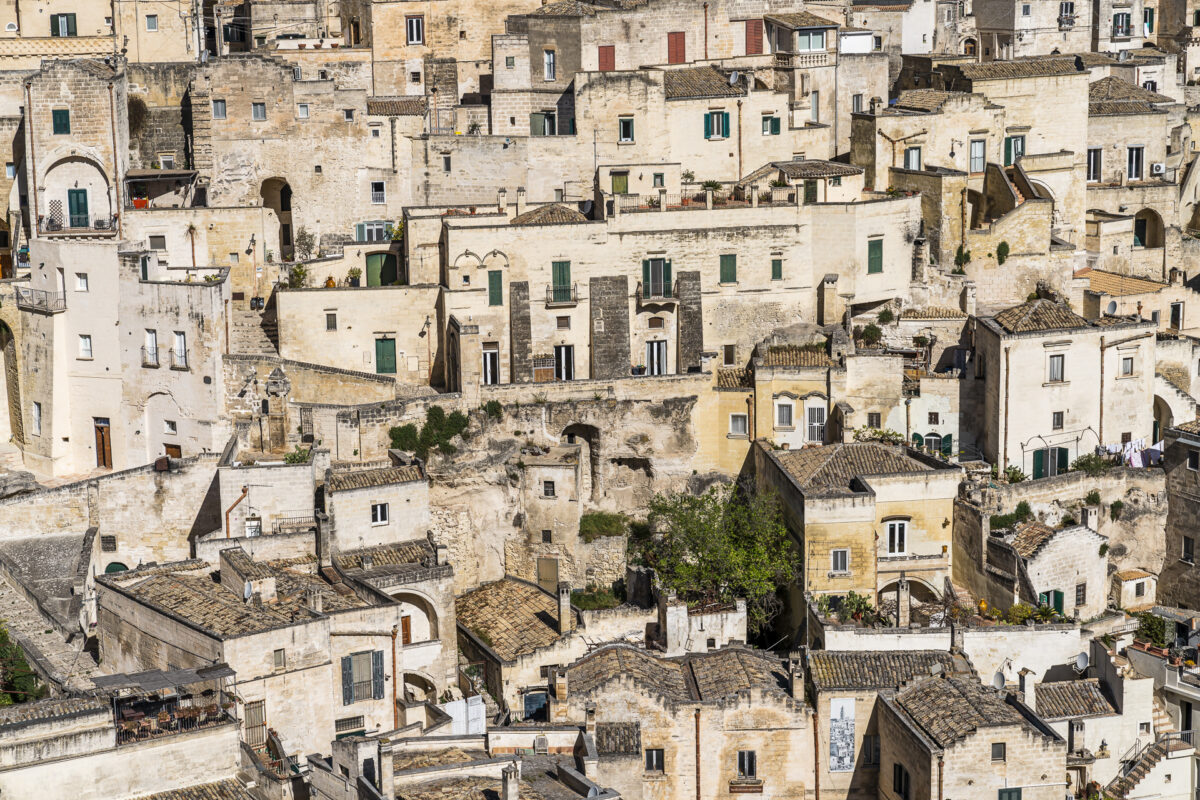
Matera Tip No. 5: take a hike in the Murgia Materana
We combined our extended early morning foray through the Sassi with a detour to the opposite plateau of the Murgia. From there you can enjoy a phenomenal panoramic view of the rock city. Theoretically, a road leads up from the back to the Belvedere Murgia Timone. However, this was closed to private traffic on the days of our visit. In the off-season (November to March), however, it should be open – as far as I have understood.
So we had two options to choose from: either take the shuttle bus up or hike up via Ponte Tibetano ourselves. We opted for the latter. The trail starts at Via Madonna delle Virtu/Via Ospedale Vecchio. From there, a steep, sometimes somewhat slippery path leads down into the gorge. The Gravina is crossed by a suspension bridge (Ponte Tibetano) and then a hiking trail leads you to the heights of the plateau. The circular hike takes about two to three hours (depending on whether you want to visit some of the local rock churches or primarily enjoy the view of the Sassi of Matera).
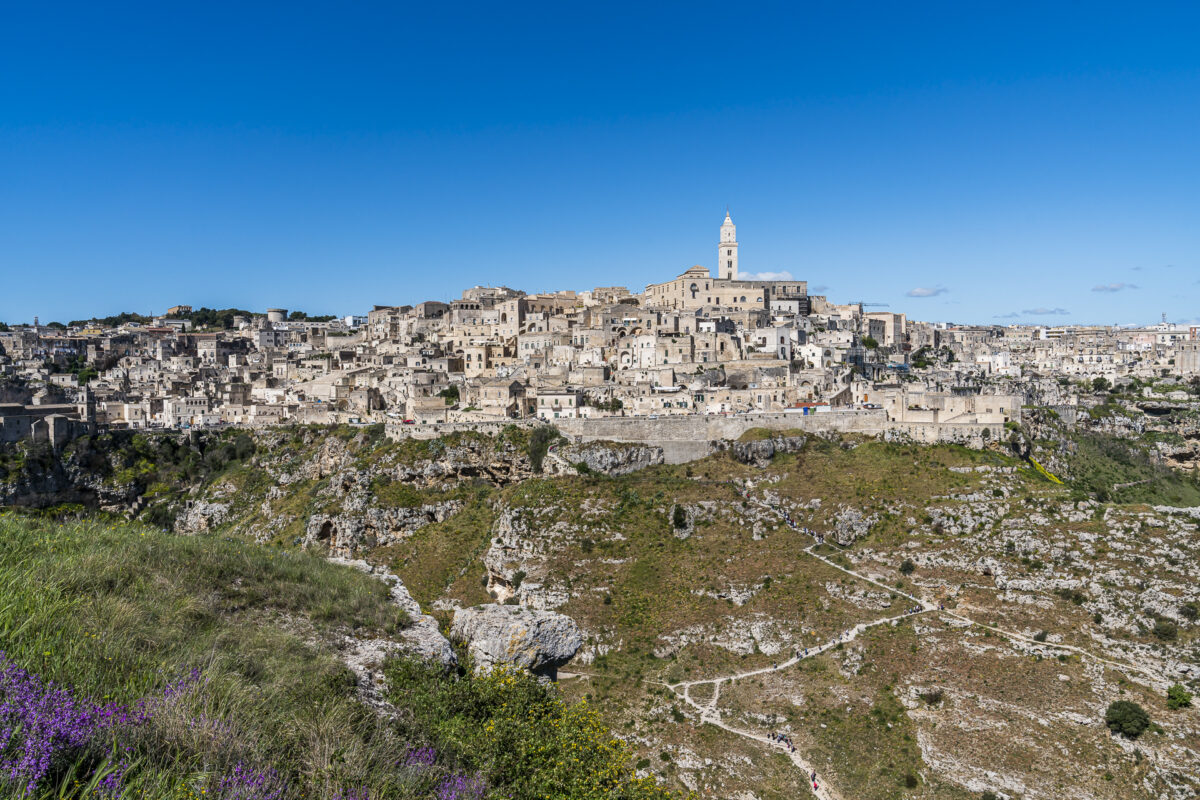
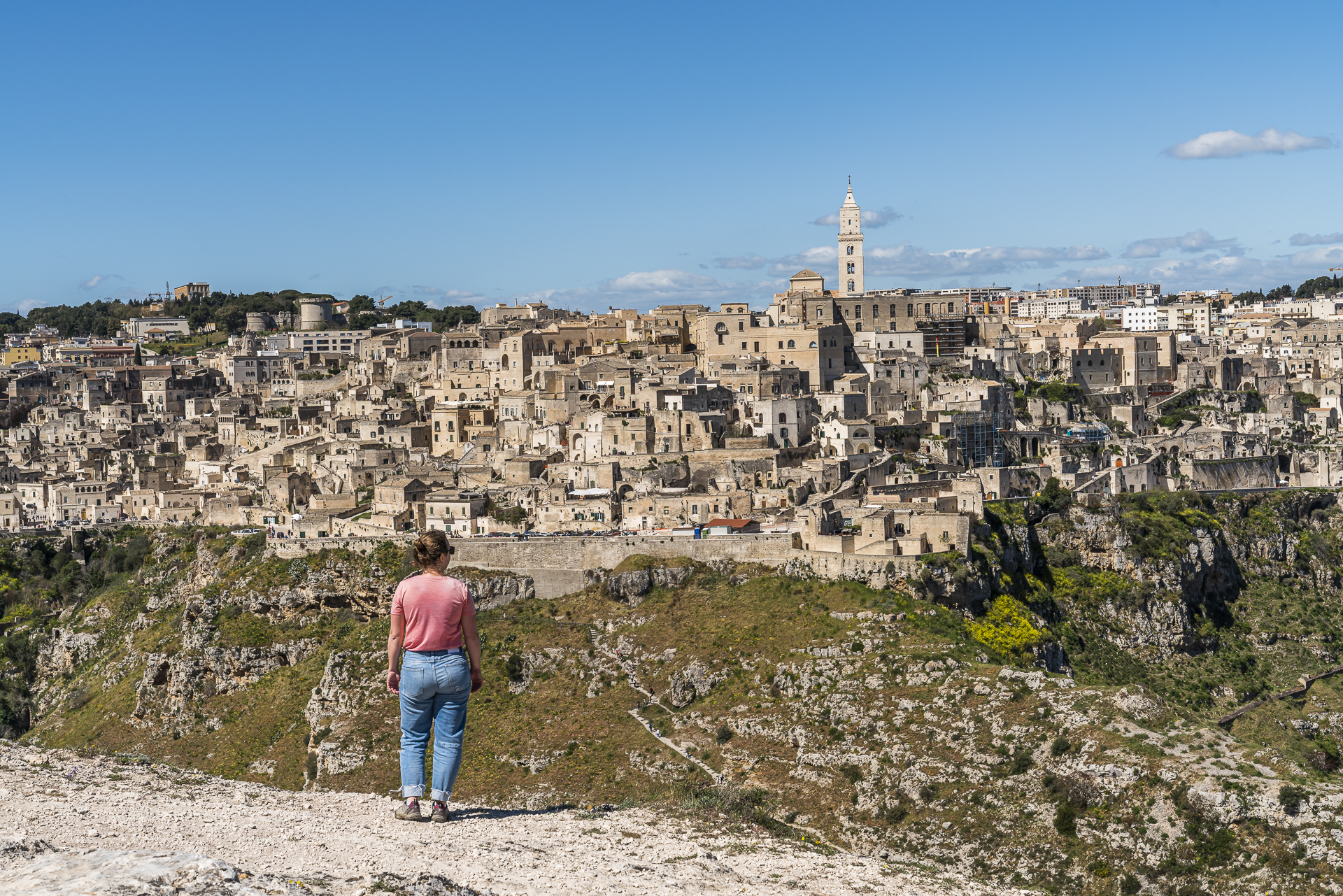
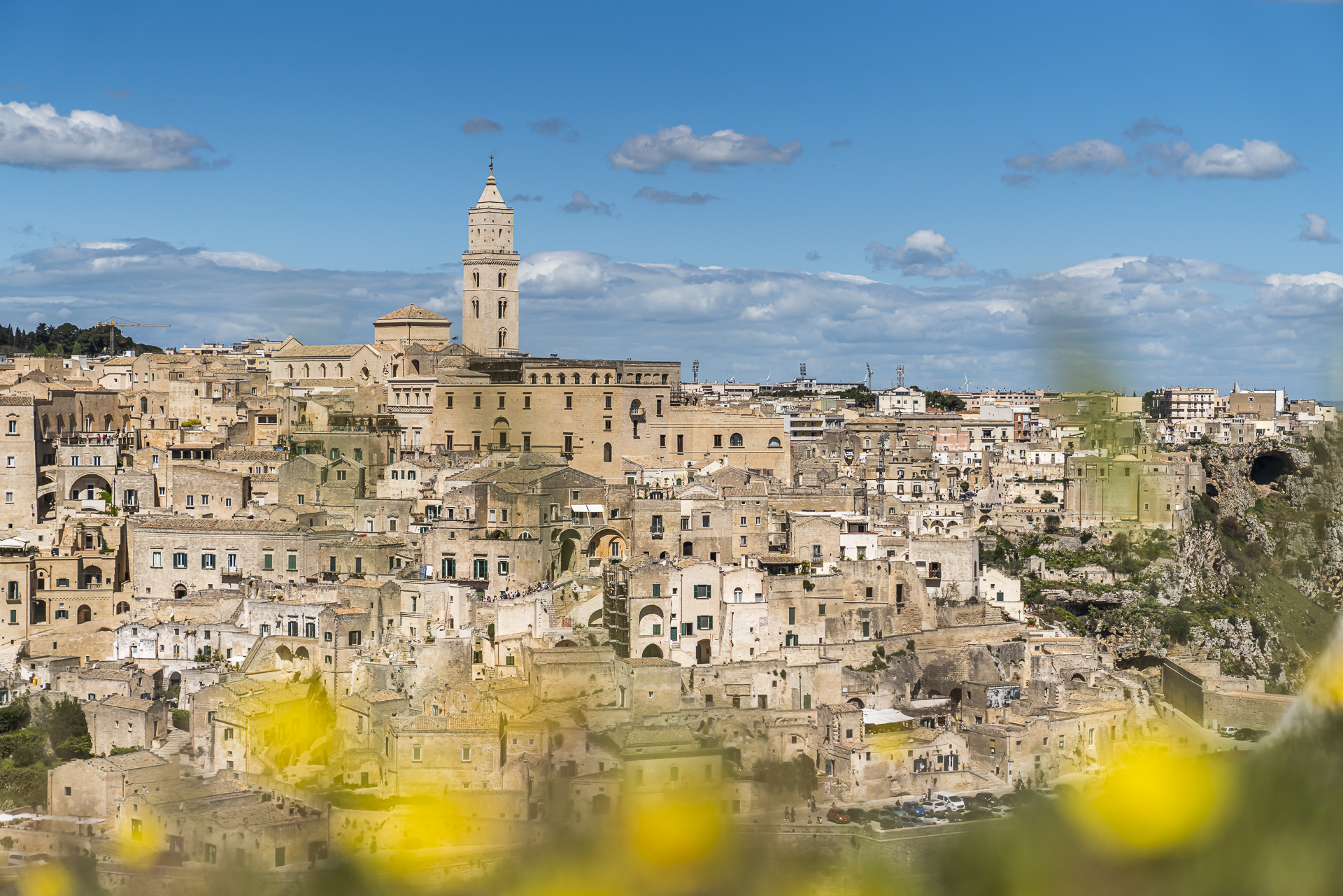
Even if it’s “only” a short hike: put on good shoes (ideally trekking or hiking shoes), remember to protect yourself from the sun and take water with you.
Matera Tip No. 6: visit the MUSMA
There are several museums to visit in Matera. These include the troglodyte dwelling Storica Casa Grotta di Vico Solitario, furnished in the style of the 40s/50s, the multimedia exhibition on the history of Matera in Casa Noha or the Laboratorio della Civilta Contadina Museum, where you can learn more about the simple life in the Sassi.
If you are interested in art, I can recommend a visit to the MUSMA – Museo della Scultura Contemporanea. In this museum, sculptures by contemporary artists are exhibited in the premises of a 16th-century palazzo. This also includes five different cave strands, in which the works of art come into their own. By the way, a crowd of people is usually not to be expected here. On our tour, we were the only museum visitors.
MUSMA is open daily (except December 25 and January 1 and 2) from 10:00 a.m. to 6:00 p.m. The regular entrance ticket is 7 euros. The website Musei di Matera offers a good overview of the different museums of Matera.
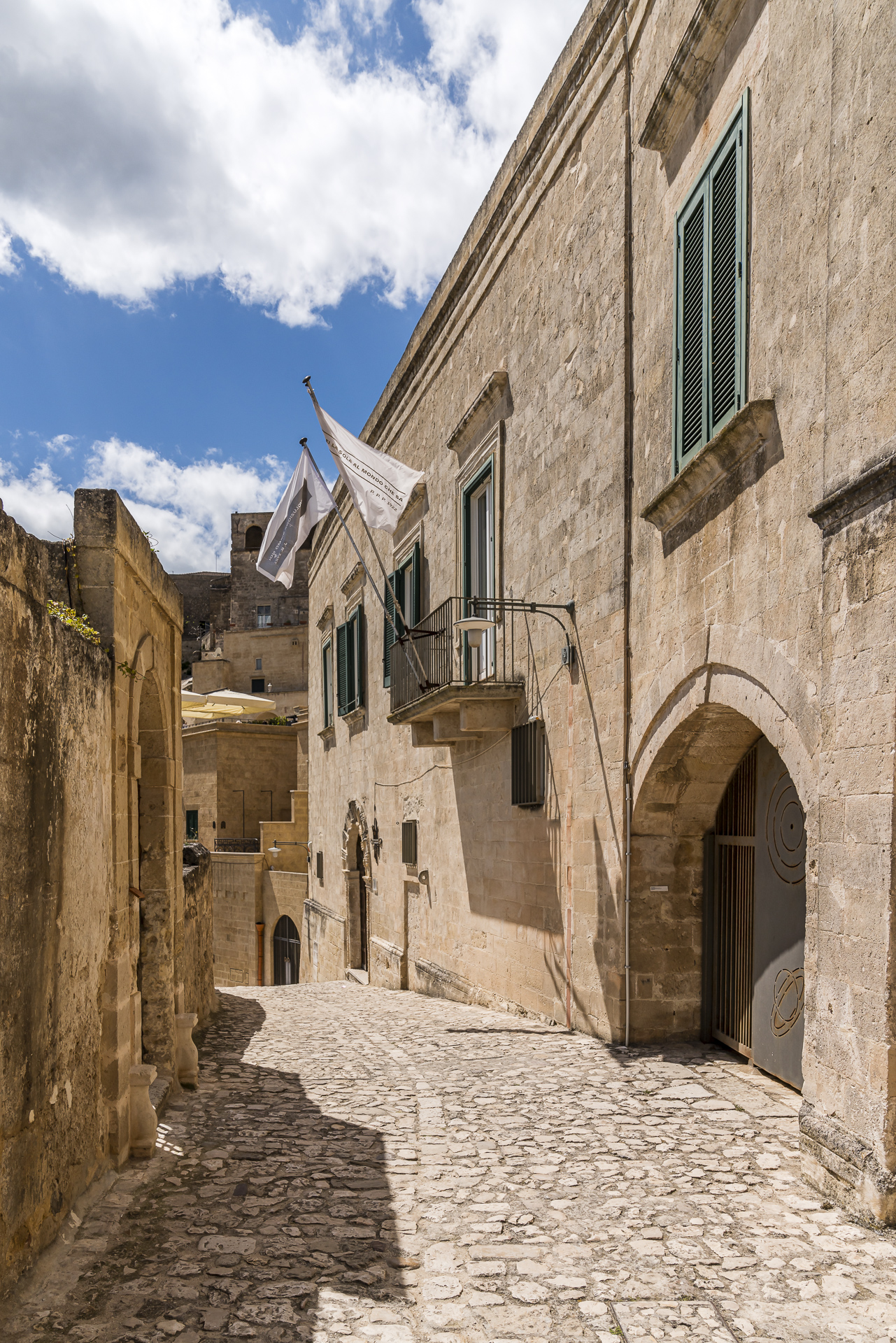
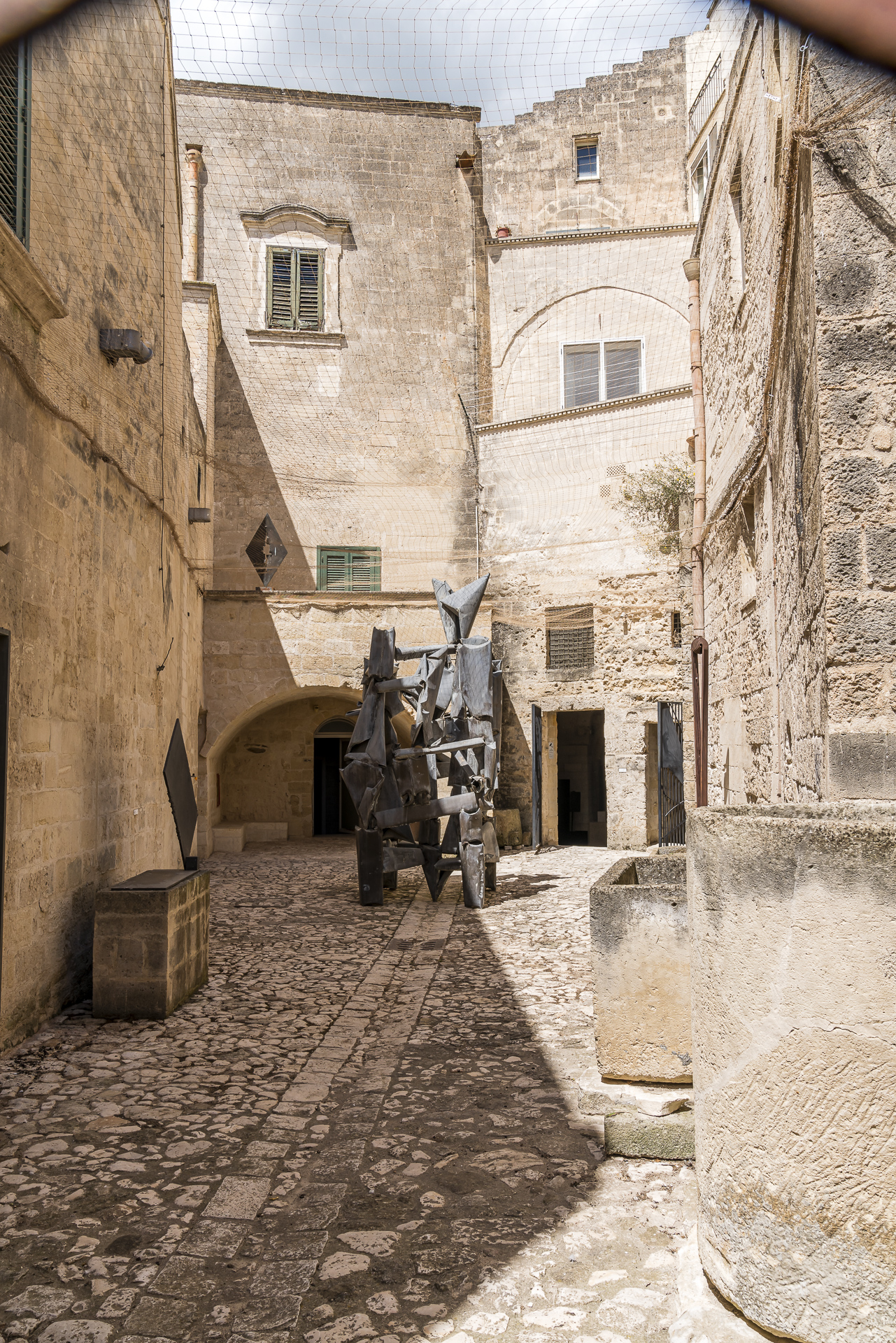
Matera Tip No. 7: Treat yourself to an aperitif with a view
More or less right next to the MUSMA is the rooftop terrace of the Quarry Resort – the Quarry Lounge. From here you can enjoy a drink or light lunch with a great view over the old town. And yes: If you already have around 25,000 steps on your counter around 2:00 p.m., then it doesn’t necessarily have to be the best osteria in town, but a cozy seating area with a good portion of pasta is enough for you.
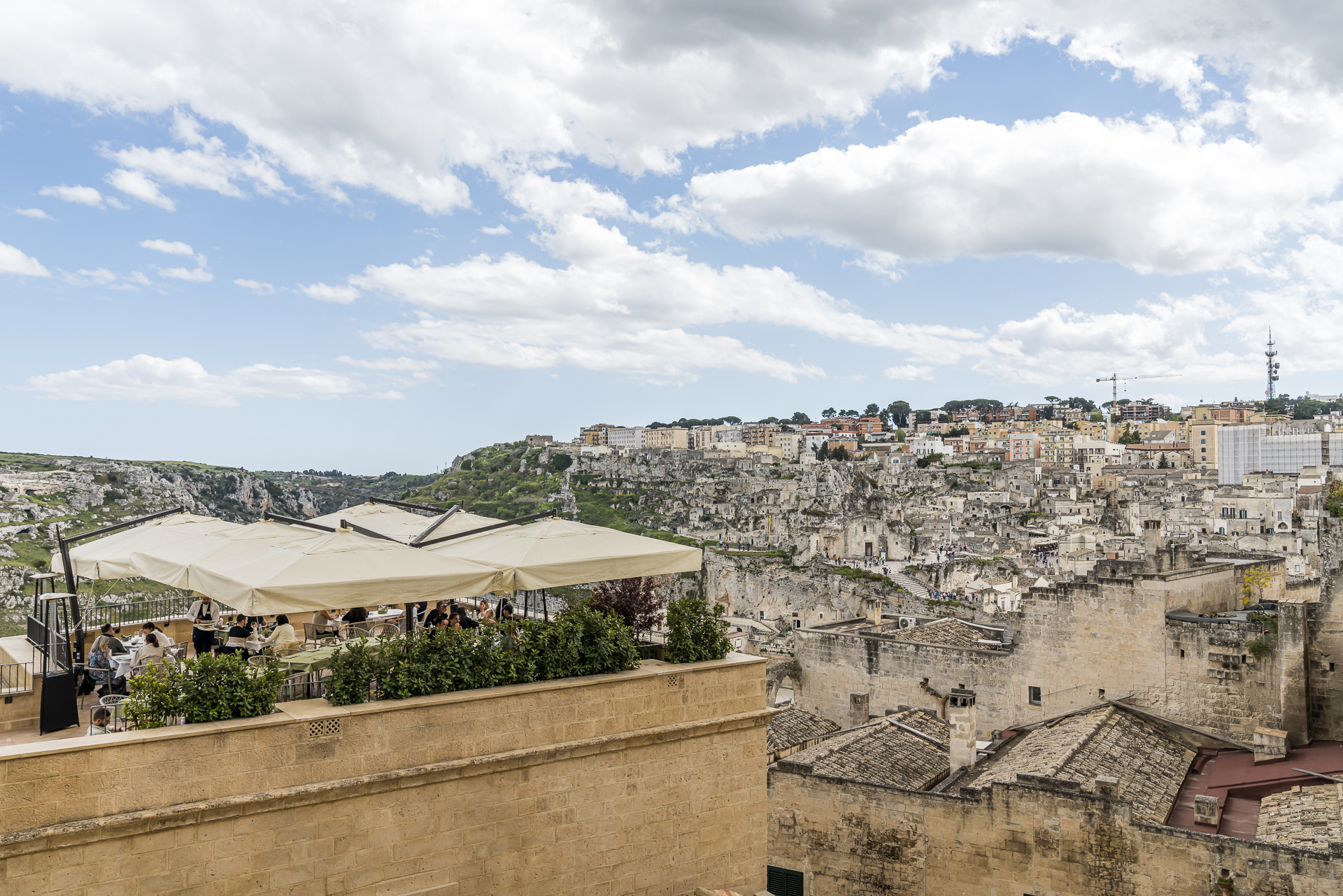
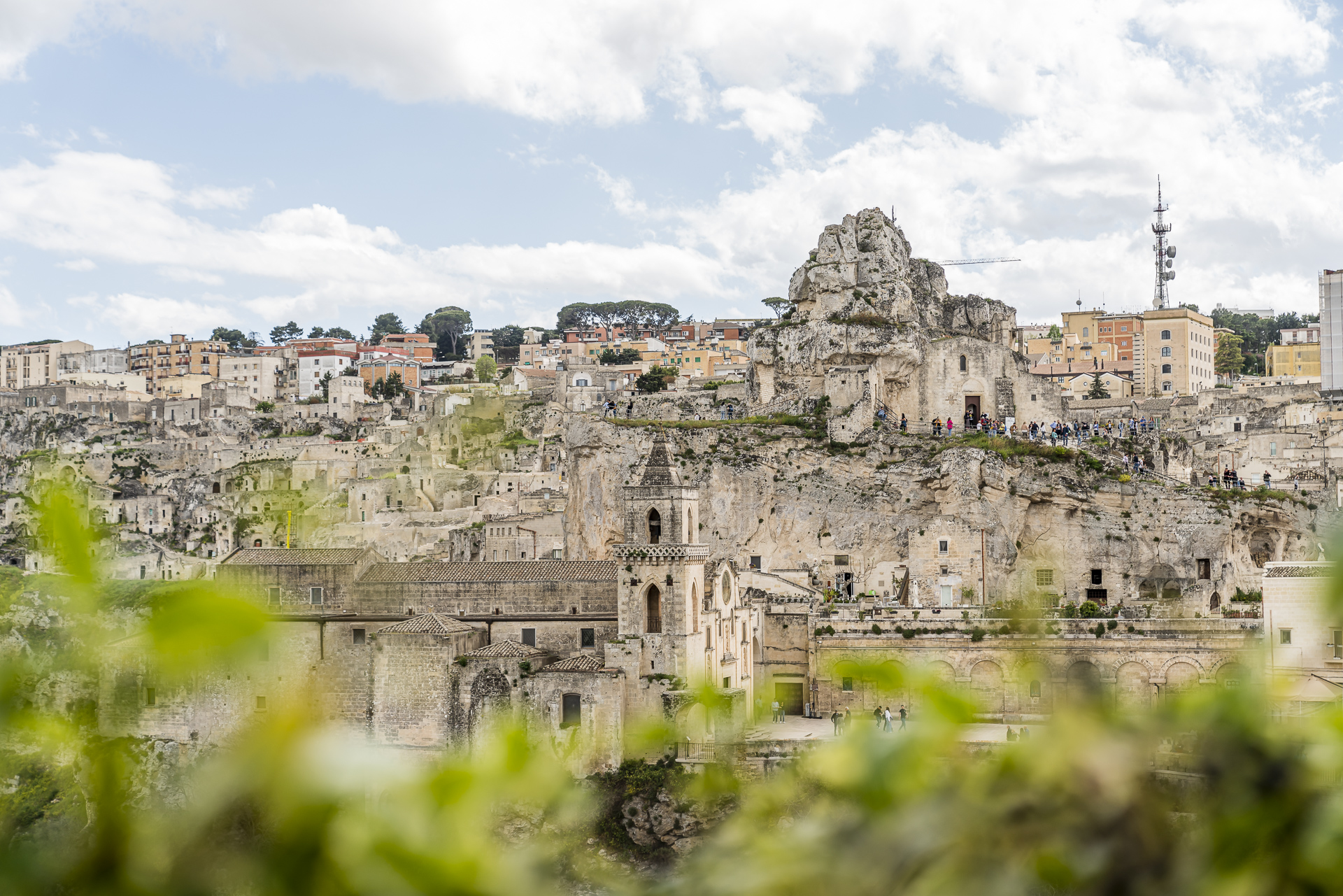
Matera Tip No. 8: visit the Palombaro Lungo
Matera’s backdrop is so fascinating that you almost forget that another urban highlight is hidden underground. The Palombaro Lungo (often referred to as the “Cathedral of Water“) is a huge cistern dug into the tufa and one of the main reasons why the Sassi have been declared a World Heritage Site.
Part of this complex urban water system can be seen in Piazza Vittorio Veneto. The entrance fee is three euros per adult. We visited the cistern shortly before it closed – a good decision, as there was hardly anyone in it. The short tour over metal walkways does not take more than 15 minutes.
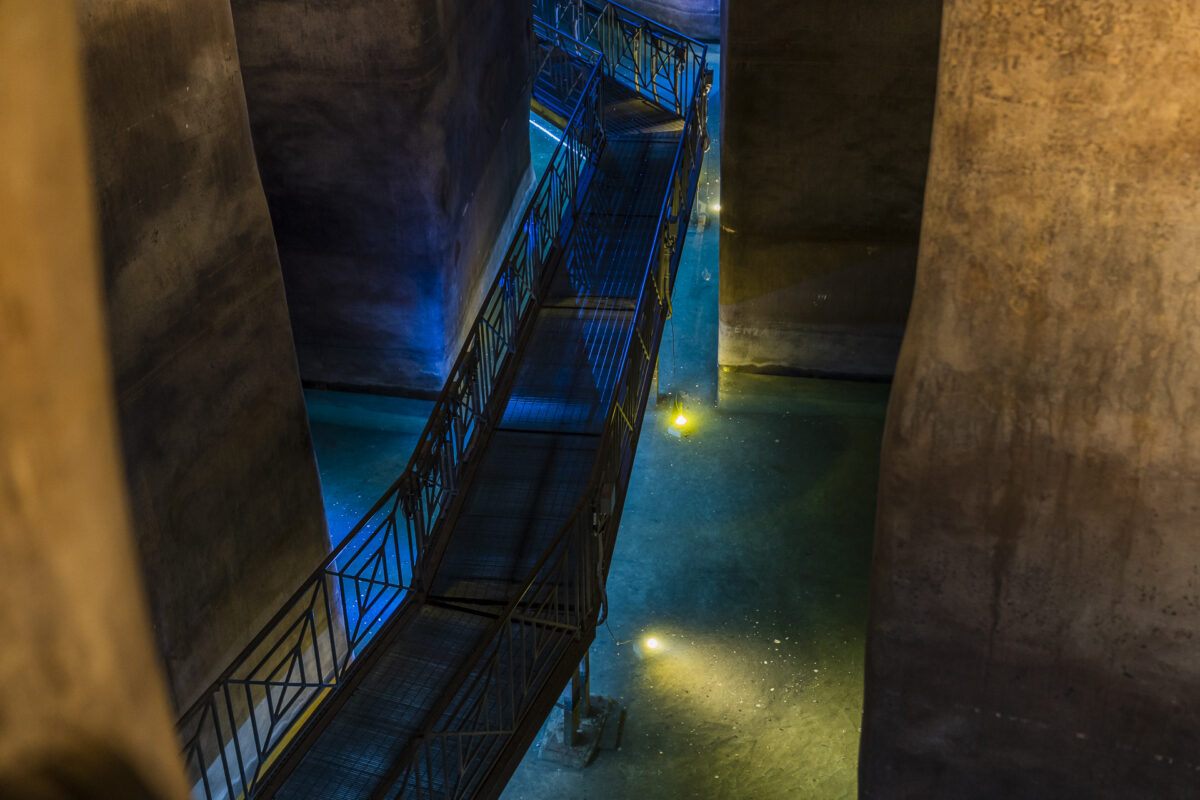
Matera Tipp Nr. 9: Blue Hour & Cocktails
Admittedly, the scenery of Matera captivated me at any time of the day. However, the rock city presents itself most beautifully during the blue hour. Then, when the last rays of sunshine have said goodbye behind the sand-coloured, nested houses and the first lights make the facades shine in a warm orange-yellow. The viewpoint where the following Blue Hour photo was taken is hidden behind the Chiesa San Pietro Barisano.
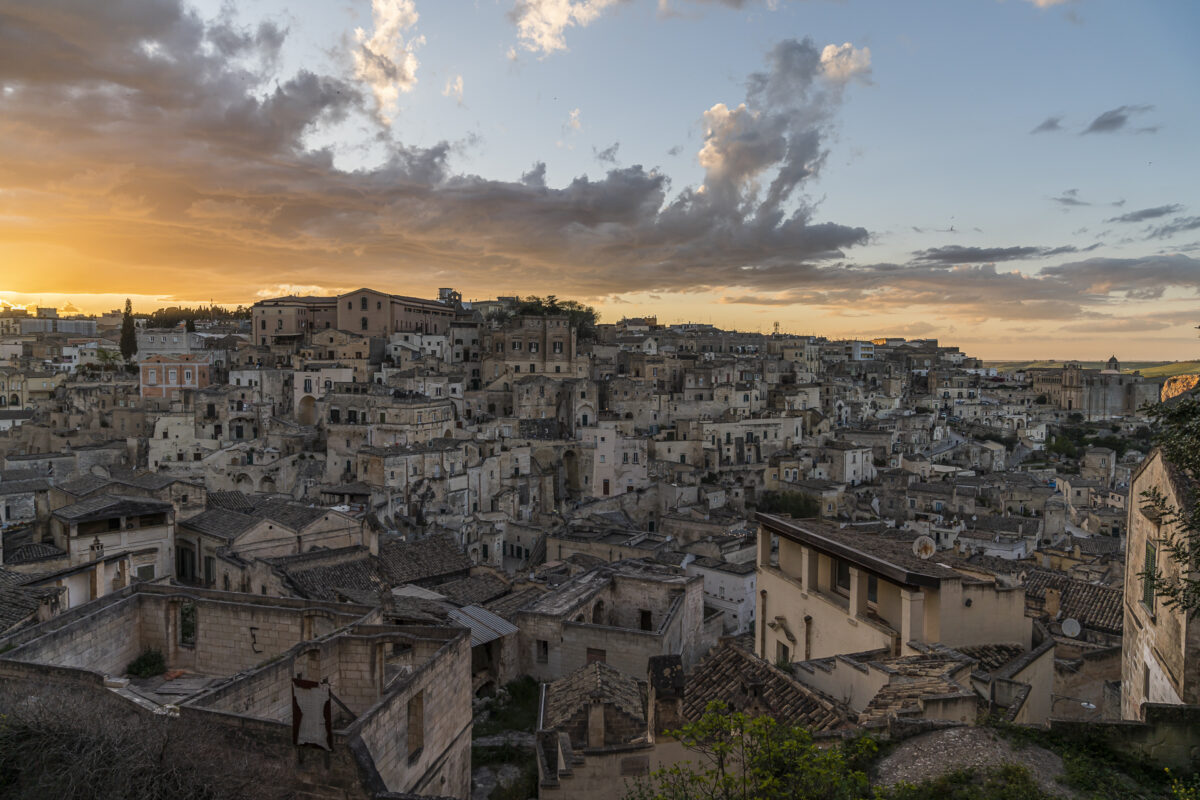
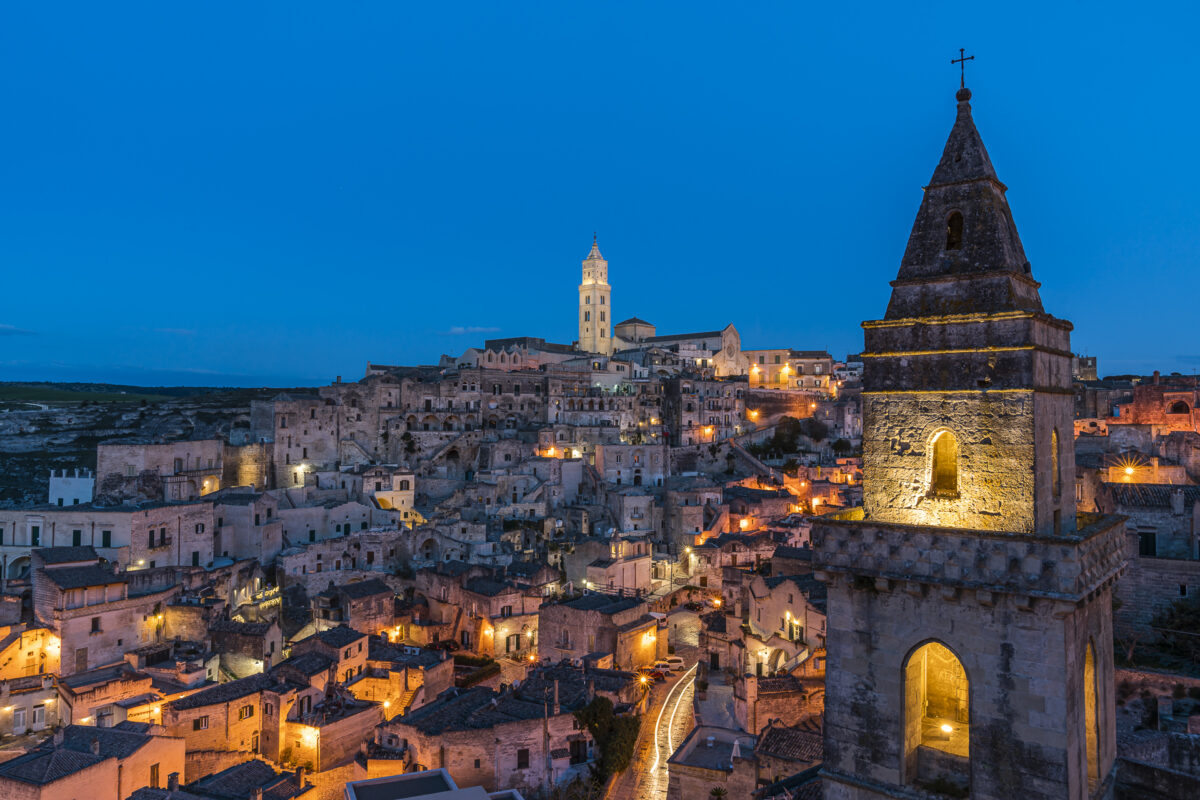
And if you’re in the mood for a fancy cocktail afterwards, I recommend heading for Charlie’s Speakeasy. In the bar, which at first glance seems inconspicuous, really good cocktails are mixed.
Practical tips for your visit to Matera
Matera is a city in the southern Italian region of Basilicata with around 60,000 inhabitants. The city is located right on the border with the neighboring region of Puglia. It is just 60 kilometres from Matera to Bari.
The journey to Matera usually leads via Bari. The capital of the Puglia region is connected to the Italian high-speed network and can be reached from Milan in just under seven hours (by train). From Bari there are suburban train connections to Matera. These last almost two hours. It’s quicker by car. The journey from Bari via the SS96 to Matera takes less than an hour.
If you travel to Matera by car, you should keep in mind that the entire area of the Sassi is located in a zone with a strict traffic restriction (ZTL). There are various parking facilities outside the old town, some in open and partly in guarded areas. For guests of the Sextantio, for example, parking spaces are reserved in the Parcheggio Nicoletti Michele, which is close to the city centre. These cost 30 euros per night. It is best to inquire at your booked accommodation about the best parking options and the associated costs.
The main attraction is the old town “Sassi di Matera” with its troglodyte dwellings and rock-hewn churches.
The main sights of Matera can be visited in one day. But in order to really immerse yourself in the special ambience of the city, I think it’s worth planning two days.
We visited Matera in the spring (April) which was ideal. In the summer months it can get very hot in the city and depending on the holiday season (especially in August) it can also be very crowded. I would recommend you to schedule the trip in the spring months (April to June) or in autumn (September/October). By the way: in the run-up to Christmas, Matera also scores with a particularly atmospheric Christmas market.


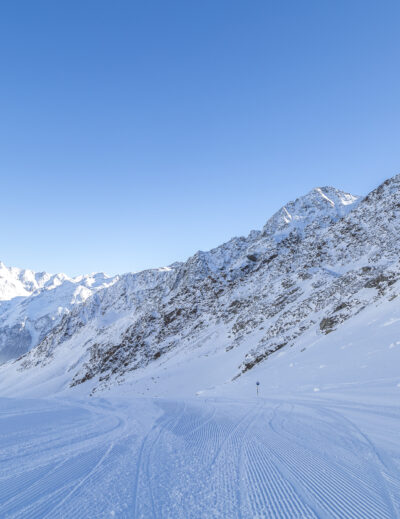
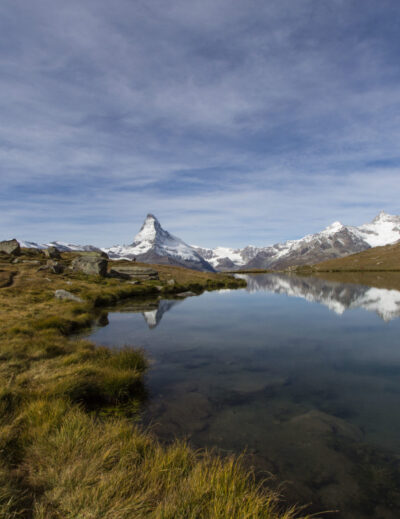

Leave a Reply